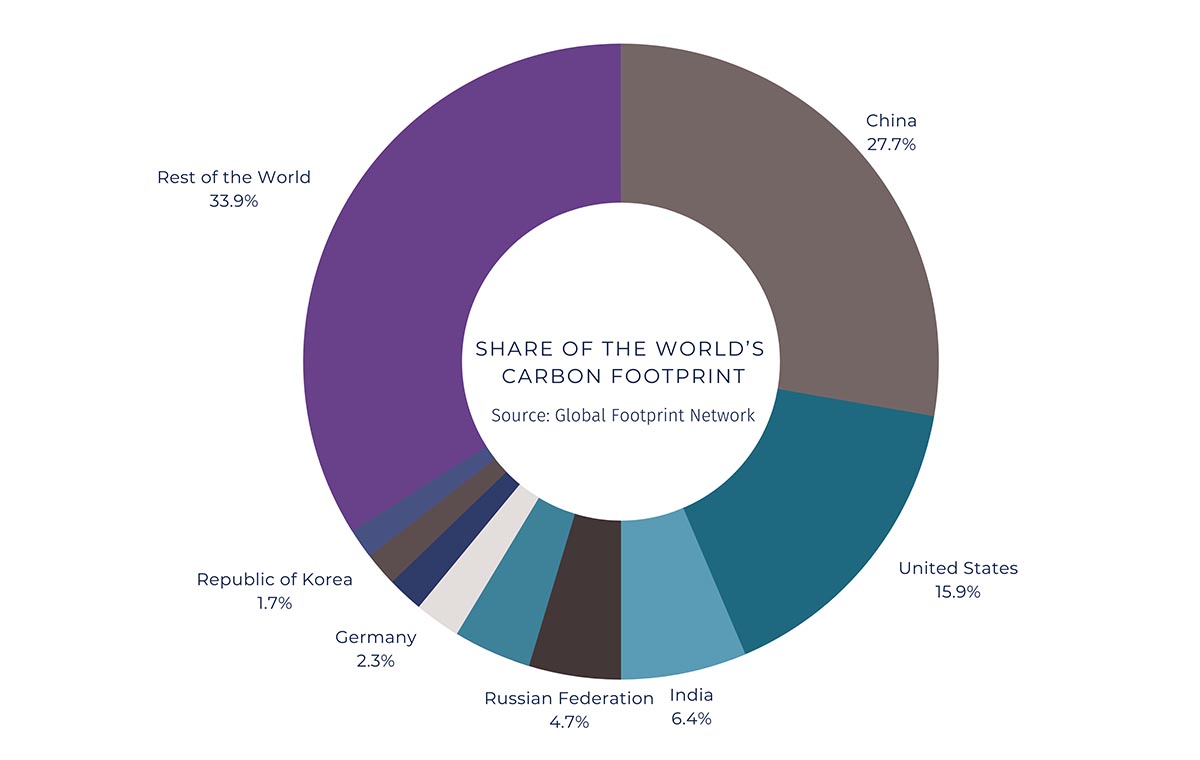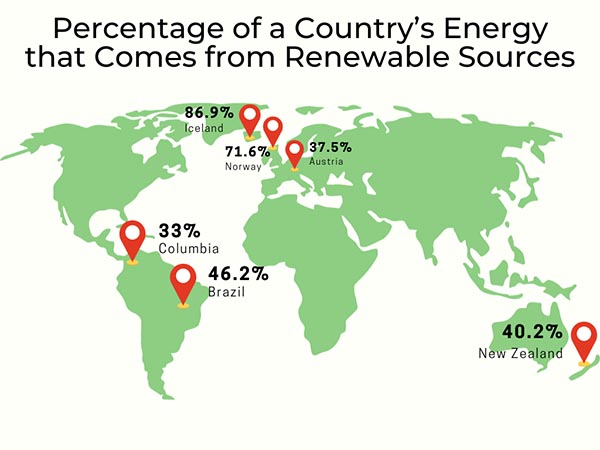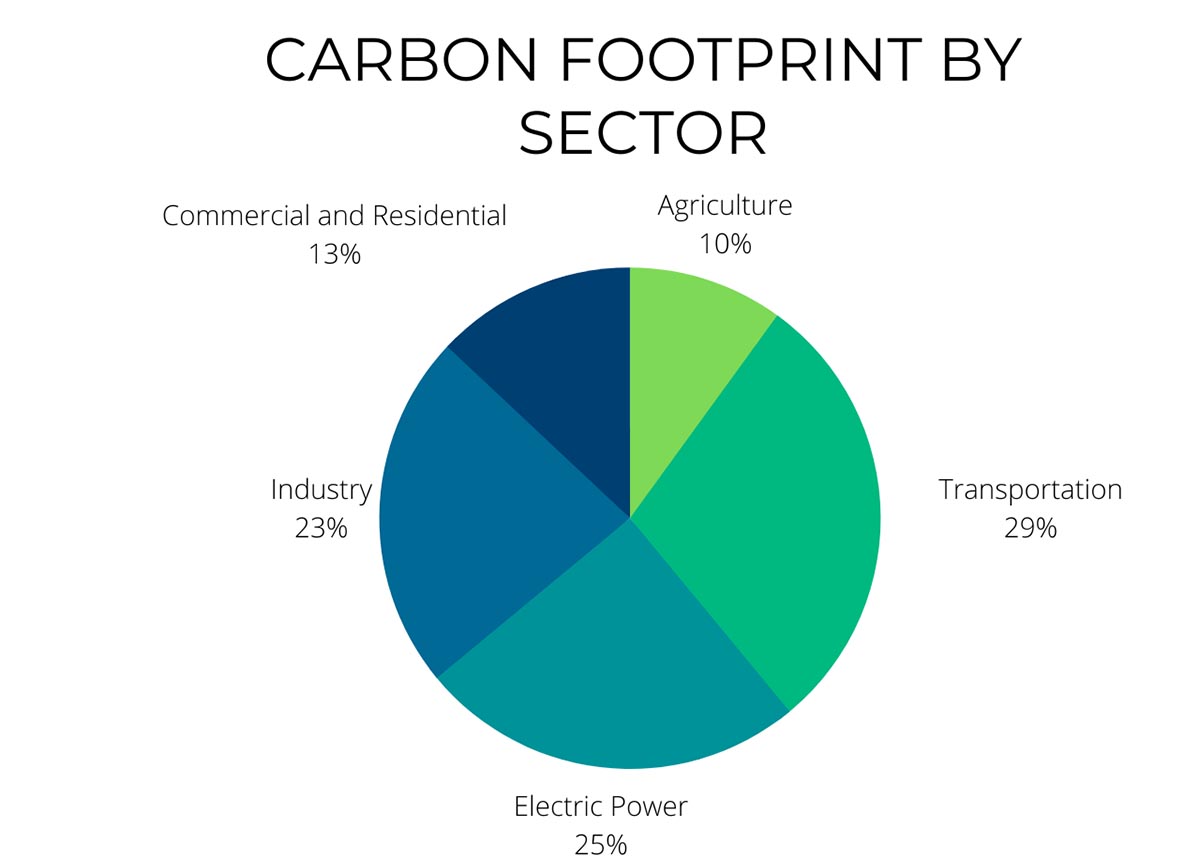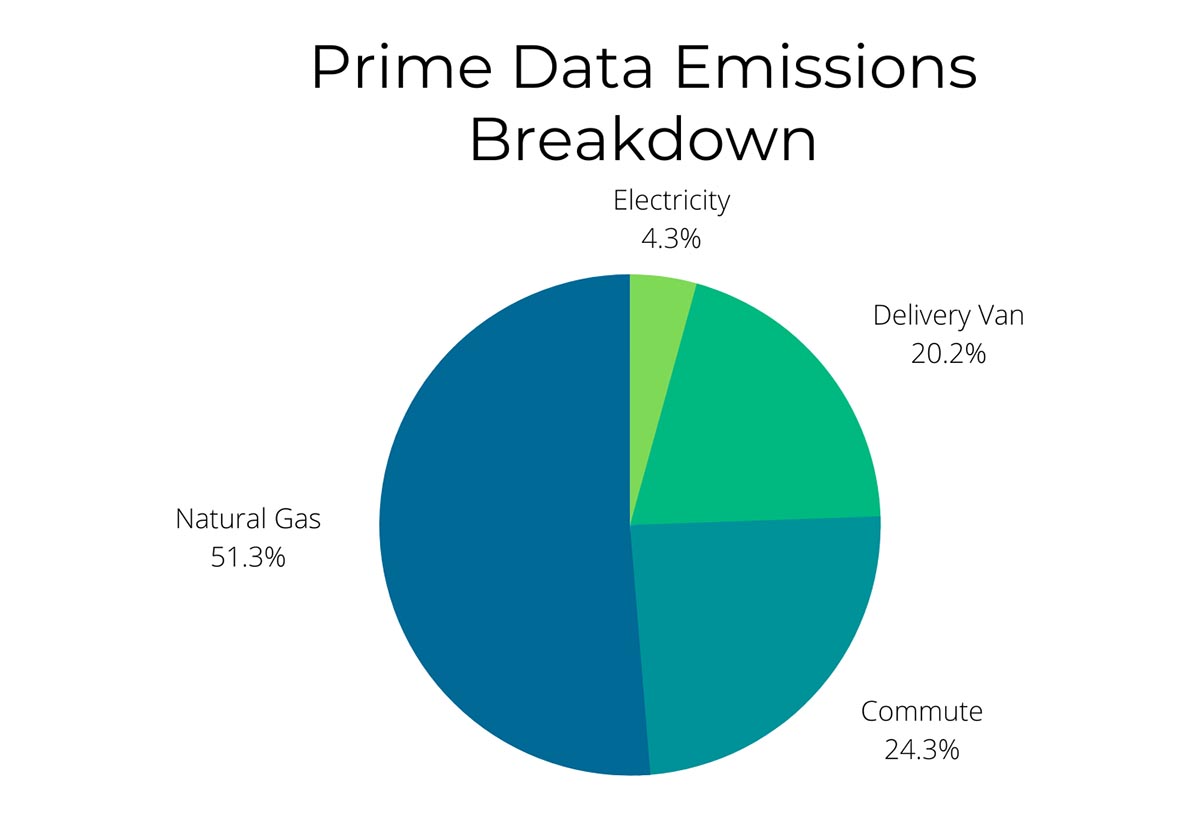
At home, we recycle and turn out the lights when we leave the room. We buy hybrid vehicles and some of us even bike to work. We do our part to conserve resources and minimize our impact on the planet. But what about at work? How much impact do printing businesses, and the process of printing itself, impact the planet? How much collective responsibility do we bear?
What’s Our Impact?
Before answering this question, it’s important to step back and look at the larger context. That starts with the country we live in. The United States has an out-sized impact on the environment. With only 4.5% of the world’s population, we generate 15.6% of the world’s carbon footprint.

Source: Global Footprint Network
Why this outsized impact? We are a highly industrialized economy, with a significant focus on manufacturing, energy production, and transportation sectors. Our reliance on fossil fuels, such as coal, oil, and natural gas, to meet the energy demands of industries and transportation leads to substantial greenhouse gas emissions. Thus, our level of industrialization has its upsides and its downsides, too.
Because the majority of our carbon footprint comes from the impact of fossil fuels, the US’s outsized impact presents an outsized opportunity to do better. Energy sources are one of the factors over which we have significant control. By switching from fossil fuels to renewable sources, we can make up lost carbon footprint “ground” very quickly.
Percentage of a Country’s Energy that Comes from Renewable Sources

Source: WiseVoter.com
How does the United States compare to other countries when it comes to renewable energy? On average, 17% of countries’ energy comes from renewable sources. In the United States, it is only 10.7%. On the list of countries with the highest percentage of renewable energy use, the United States isn’t even in in the top 10.
This is one area where the printing industry can lead the way.
Which Sectors Have the Highest Footprint?
How much impact can we have? As in any country, not every sector of the economy has the same environmental impact. In the United States, the sector with the largest carbon footprint is transportation. This is followed by electric power. Industry, in which commercial printing would be included, owns 23% of the emissions. So here in the commercial printing industry, we have an opportunity to make an impact on nearly one-quarter of the emissions that come from industry overall.

Source: US EPA
What’s the Carbon Footprint of Print and Mail?
Calculating what that impact is, exactly, is tricky since every print shop’s impact will be wildly different. But just to give a general idea, Carbon Quota, a UK-based company that helps businesses lower their carbon footprints, did the following calculation for one of its customers:
An A4 96-page, litho-printed colour brochure with a four-page cover, with a run of 20,000 copies and a delivery distance of 129km creates a total carbon footprint of just over 20 tonnes (CO2e). This is equal to boiling a kettle 2.8 million times or flying over 4 times around the world in economy class.*
On a smaller scale, Canada’s Prime Data, whose goal is to be the first carbon-neutral direct mail house in the world (see “Calculating the Carbon Footprint of Canada’s Direct Mail”), calculated the total carbon emissions of each direct mail piece it sends at 205g per piece. This includes the emissions generated from forestry, paper production, employee commutes, printing, distribution, and end-of-life processing.

Source: Prime Data
Where is this carbon footprint coming from? Through its research, Prime Data found that 85% of the carbon footprint of its direct mail pieces results from paper production and disposal. The second largest contributor is mail delivery through Canada Post. The third largest contributor is its own internal operations, of which heating and cooling is the largest percentage.
Steps to Bringing Down the Footprint
In this, Prime Data provides a blueprint to its peers. Assuming most print shops have a broadly similar structure, this gives the industry areas to target, as well. So what steps is Prime Data taking bring its footprint down?
- Asking more questions of paper suppliers and take into consideration a paper’s carbon footprint as part of its vendor selection process.
- Encouraging its trucking company to invest in electric vehicles (or, for printers with their own fleets, purchase electric or hybrid vehicles).
- Reducing the weight of the mail it sends. (This includes introducing the EZ Donor Mailer, which eliminates the outer envelope.)
- Because Prime Data determined that it had a huge heating-cooling loss around its dock areas during loading and unloading, it has added heavy-duty energy curtains to minimize as much heating and cooling loss as possible.
- Reducing the carbon footprint of its employee commutes by encouraging remote and hybrid work where applicable.
- Offsetting any additional emissions—in this case, through the Great Bear Rainforest Carbon Offset project in British Columbia.
Source: Prime Data
In addition to these areas of production modeled by Prime Data, printers can take steps in the nonproduction areas, as well. These start with doing an energy audit to identify areas where energy is being wasted and opportunities for improvement. These might include adding insulation, sealing leaks, improving the efficiency of heating systems (including adding programmable thermostats), and similar measures.
There are many areas in a print shop—both on the production floor and elsewhere—where simple steps can make a difference. For our industry, our biggest opportunities can be found in paper selection, energy use (primarily heating and cooling), and transportation.
Knowing these sources of carbon emissions is an important first step because it points printers to areas to get started. This is encouraging because, while there are many aspects of climate destruction that our industry cannot inherently change, there are some very practical, easily accessible areas where we can.















Discussion
Only verified members can comment.